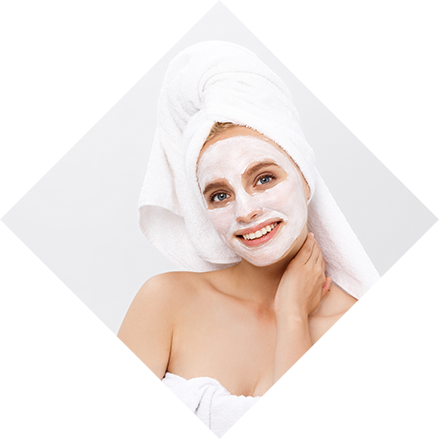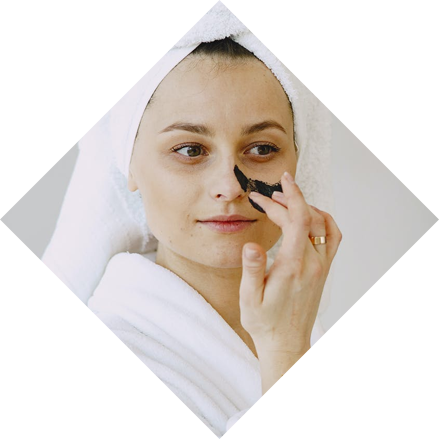Warts

Need An Appointment?
Drop Your Number here
Warts: Causes, Types, Symptoms, and Effective Treatment Options
Warts are small, rough, and often raised skin growths caused by the human papillomavirus (HPV). They can appear anywhere on the body but are most common on the hands, feet, face, and genitals. While warts are generally harmless, they can be contagious and may cause discomfort or embarrassment. Fortunately, modern dermatological treatments make wart removal simple, safe, and effective.
Causes of Warts
The main cause of warts is the human papillomavirus (HPV). There are more than 100 types of HPV, and only a few cause warts on the skin. The infection spreads through direct or indirect contact with the virus.
Common causes and risk factors include:
-
Touching or picking existing warts
-
Using contaminated objects such as towels or razors
-
Walking barefoot in public areas like swimming pools or locker rooms
-
Cuts, cracks, or damaged skin
-
Weakened immune system (due to stress, illness, or certain medications)
-
Nail biting or hangnails
Children and people with compromised immunity are more prone to developing warts.
1.jpg)
Treatment Options for Warts
While warts can sometimes disappear naturally within months or years, medical treatment helps remove them faster and prevents spreading.
1. Topical Treatments
-
Salicylic acid: A common over-the-counter treatment that softens and gradually removes wart tissue.
-
Prescription creams: Contain stronger ingredients like tretinoin or imiquimod to stimulate the immune system.
2. Cryotherapy (Freezing Therapy)
A dermatologist applies liquid nitrogen to freeze the wart, causing it to blister and fall off within a few weeks. This is one of the most effective treatments for common and plantar warts.
3. Laser Treatment
Laser energy targets and destroys wart tissue by cutting off its blood supply. It is precise, minimally invasive, and ideal for stubborn or recurring warts.
4. Electrocautery
This method uses controlled electric current to burn off the wart. It’s typically used for resistant warts that don’t respond to other treatments.
5. Surgical Removal
In severe or persistent cases, surgical excision under local anesthesia may be recommended. This provides instant removal but may leave a small scar.
6. Immunotherapy
Involves stimulating the body’s immune response to fight HPV. It’s often used for stubborn warts or those in sensitive areas.
Need An Appointment?
Drop Your Number here
Symptoms of Warts
While symptoms vary based on the type and location, common signs of warts include:
-
Rough or bumpy skin growth
-
Flesh-colored, white, or brown appearance
-
Presence of tiny black dots (clotted blood vessels)
-
Pain or tenderness, especially on pressure points (like soles)
-
Clusters or spread of multiple warts in nearby areas
Home Remedies and Precautions
While home remedies can help mild cases, medical guidance is always recommended.
Helpful tips include:
-
Avoid picking or scratching warts.
-
Keep affected areas clean and dry.
-
Use separate towels and personal items.
-
Cover warts with bandages to prevent spreading.
-
Boost immunity with a balanced diet, adequate sleep, and hydration.
-
Do not attempt to cut or remove warts yourself.
Prevention Tips
-
Avoid direct contact with warts (your own or others’).
-
Always wear flip-flops in public showers or pools.
-
Keep feet dry and change socks daily.
-
Avoid biting nails or cuticles.
-
Strengthen your immune system through a healthy lifestyle.
Conclusion
Warts are a common skin concern caused by the human papillomavirus (HPV). Though harmless, they can be bothersome or cosmetically unappealing. Fortunately, with modern dermatological treatments like cryotherapy, laser therapy, and topical medications, wart removal is quick and effective. If you notice any unusual skin growth, consult a dermatologist for accurate diagnosis and the best treatment plan to restore smooth, healthy skin.
Patient Testimonials

She's the best skin doctor I've come across so far. she listens patiently, gives the prominent treatment accordingly. Guys looking for skin treatment must visit Dr Nidhi Bansal, you will get satisfying results👍
- Sanya Sayyed

I consulted with Dr Nidhi Bansal after one of my friend suggested. The doctor is very
calm and well versed with the solutions. I definitely liked the way He made me
understand the issues of my hair sclap.
I am very happy with my own experience with
her and the treatment provided amazing hence I would highly recommend to this doctor for
any skin or hair disease.
- Anu Verma

I was suffering from severe acne on my face. Dr Nidhi told me in detail about the treatment options and customized the procedures for my face. Within one day my redness and acne has reduced by 90%. I am so happy with the results and would recommend Dr Nidhi to everyone for their skin and hair problems.
Priya Rajput

Best doctor I always go to Dr Nidhi skin clinic whenever i have any skin problems . Dr. Nidhi is such a humble + trusted doctor I was dealing with pimples and scars from 6 years, someone told me about Dr Nidhi .I having been taking treatment from 2 months .my acne has gone for forever ,thanks for giving me normal skin best dermatologist in jaipur I got 100 % results , M bhut jayda preshan tha acne , blackheads whiteheads se ,mera face bhut khrab dikhta tha bhut guilty feel hota tha logo ko face krne m now I m confident .thank you doctor
Neeraj Yogi



Patient's Testimonials









